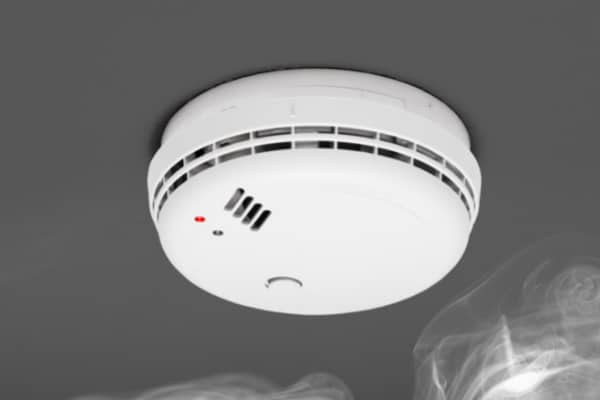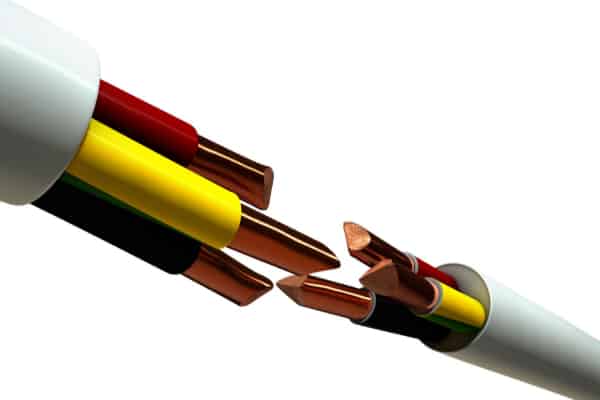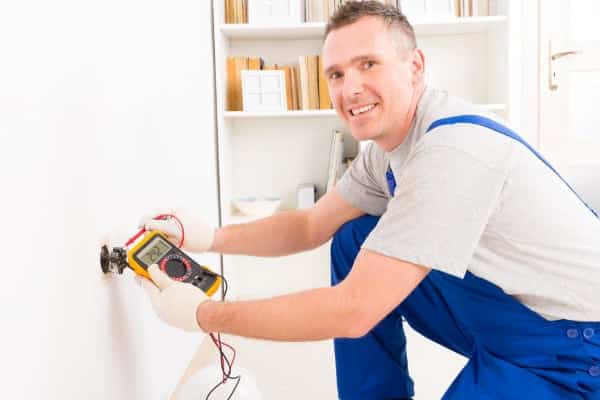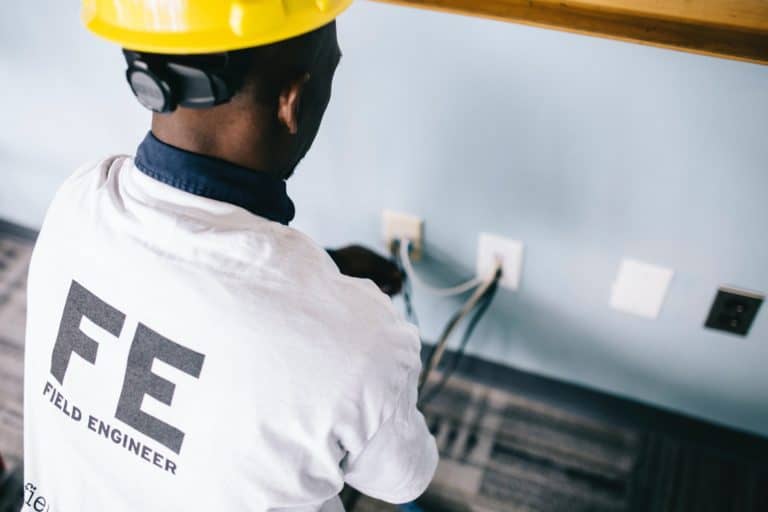Find My Local Expert Why You Must Have a Fire...
Read More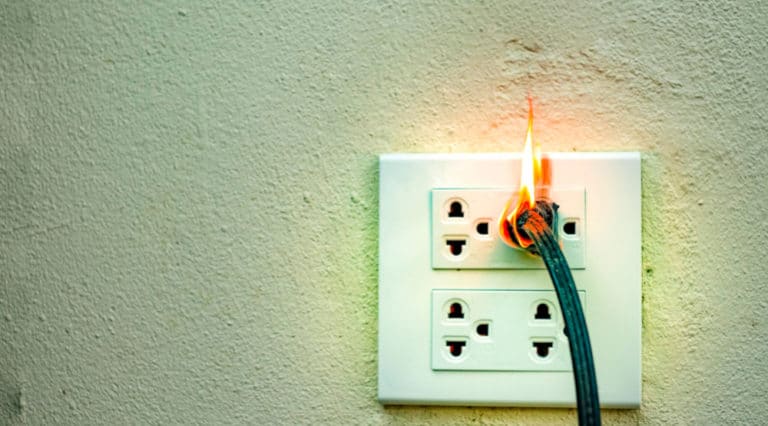
Top 7 Causes of Electrical Fires
Electrical fires are one of the leading causes of death of thousands of people each year and injuries to thousands more worldwide.
In the UK, according to Statistics/Electrical Safety First – England, there are approximately 19,300 accidental fires of electrical origin each year. A considerable percentage of this number are electrical fires in dwellings: 14,186 (53.4% of all accidental house fires).
These fires cause billions of British pounds in property loss and damage and are responsible for around 26 deaths and 718 injuries each year.
Most of these home electrical fires occur in the bedroom, but the greatest number of deaths are caused by fires in the living room and family room.
The months when most electrical fires tend to occur are the cold season and the Christmas holidays. This is due to the increased use of heating appliances and lights.
Some electrical fires that occur due to wiring problems in the home are due to a poor design or appliance failure. Still, many are caused by homeowners’ lack of knowledge, which leads them to make mistakes by overloading outlets or extension cords.
In order to help you avoid being part of the electrical fire statistic, I share with you the most common causes of electrical fires:
#1 Faulty Sockets
Faulty electrical connections in sockets are a significant cause of fires in homes. In electricity, all connections must be solid. Where connections are bolted, I advise you to regularly check the socket connections to ensure that they are not loose or any loose wires or fittings.
Sizzling is an alarm for loose connections. Watch for sizzling and similar sounds between walls. When they occur, you should take immediate action. Disconnect power as soon as possible and call a professional to check the installation.
Usually, at the end of these technical checks, the replacement of items found to be hot to the touch and sparking or flickering lights is the usual procedure.
Most fires caused by faulty sockets occur in the bedroom. For this reason, through this blog, I encourage you, as a homeowner, to install Arc Fault Circuit Interrupters (AFCI) in bedrooms.
AFCI is a fairly new technology aimed at preventing electrical fire hazards. Most building codes of the day require/mandate the installation of AFCI in residential construction.
#2 Old Wiring System
This is typical in many of the less modern houses, particularly those over 25 years old. The design often falls short of the assumed criteria for a given electrical system’s capacity and is therefore not up to modern appliance use demands.
For this reason, it is advisable, especially for people who frequently move for work or business reasons, to have the electrical installation checked by an electrician or service company before occupying their new home.
The technical evaluation makes it possible to check, among other things, the following:
THE INTEGRITY OF THE ELECTRICAL CIRCUIT
The current capacity is used to determine how many devices can be supplied simultaneously, depending on the devices’ power.
PROTECTION
It certifies whether the circuits have adequate over-current/high-temperature protection at the starting end, such as suitable fuses or circuit breakers. Most importantly, they verify the existence of earthing wiring.
POWER SOCKETS
Electrical appliances with plugs with an extra outlet are only connected to sockets with three inputs. In the case of overvoltage or short-circuit, the earthed will absorb this high current and protect you from electric shock.
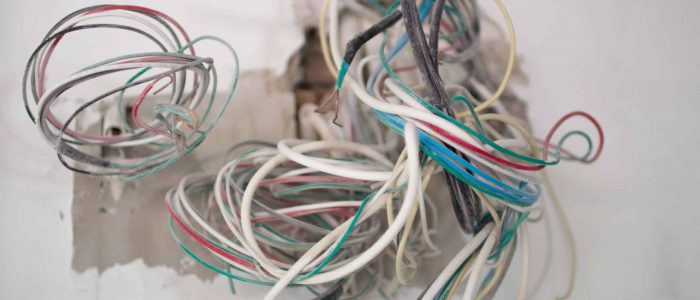
#3 Misused Extension Cords
The misuse of extension cords is a cause of electrical fires that tend to increase, especially at holiday times such as the Christmas season, when installing more lights or luminous objects.
At these times, it is often forgotten that they are intended as temporary wiring solutions and end up becoming permanent solutions.
If you find that you are using them permanently, consider upgrading the wiring in your home. Contact the best electrical service company of your choice.
Keep in mind that appliances should be plugged directly into sockets and not into extension cords. Use extension cords only as a temporary measure, don’t forget this!
The gauge of a cord indicates how big it is: The closer it is downward from zero, the larger the cord’s cross-sectional area and the more electrical current it can safely handle. For example:
– A #12 AWG (American Wire Gauge) wire depends on the number of wires per cross-sectional area and the insulation jacket can conduct 20-30 amps.
-Instead, a #8 AWG wire of similar characteristics can conduct 40-45 amps.
If your work requires you to use extension cords frequently, choose cords with polarized or three-prong plugs.
For use with larger appliances, thick, round extension cords with a gauge closer to zero are best. For smaller appliances and electronic devices, you can use thin or flat extension cords.
#4 Old Appliances
Depending on the quality of the electrical power on which a household appliance usually operates, it can lead to wear and tear in its components’ insulation capacity over time.
Generally, the wire that connects these appliances to the mains is the heavier gauge wire. Their internal components use smaller gauge wiring and electronic cards.
Over time, power fluctuations cause widespread deterioration of the insulating components, causing them to produce more heat.
Energy fluctuations eventually dry out and cause most components to lose their insulating properties, increasing their potential for fire hazards later on.
This happens because most of these appliances that have been in use for more than 20 years were not designed with the safety devices that today’s household appliances have against variations in power quality variables.
For this reason, never use an old appliance on combustible surfaces such as hardwood floors, curtains and carpets that can start fires.
#5 Overloaded Circuits
Be aware that an overloaded electrical system is dangerous and often a prelude to fire, so be proactive. If you notice that:
- Lights dim when you operate an appliance,
- TV pictures shrink,
- Heating appliances take a long time to warm up,
- Fuses are continually blowing.
These are all signs of overloaded circuits. This often occurs with cookers, which have become a major cause of electrical fires.
Having a portable heater means that people often place them very close to combustible surfaces such as curtains, beds, clothes, chairs, sofas, and carpets for convenience.
Be aware that heaters elements are hazardous because they reach high temperatures, so high that they can ignite any nearby flammable surface almost instantly upon when coming into contact with them.
#6 Lighting Fixtures
Lamps and spotlights are other commonly used electrical items that cause electrical fires. These devices are influenced by many variables that make them highly fire risky:
Installing a bulb with too high a wattage for lamps and light fixtures is the leading cause of electrical fires. Always make sure that the maximum recommended wattage of any lighting fixture or lamp is never exceeded.
Sudden variations in the variables that make up electrical power quality when out of controlling cause damage to the internal components of lighting fixtures.
In fluorescent lamps that use ballasts for ignition, being electronic elements, they are susceptible to such variations in electrical power and usually lose their insulating capacity very quickly.
This is one of the reasons why these lamps produce electrical failures that end up generating electrical fires.
The other cause that makes these lamps cause electrical fires is an inferior installation using inadequate materials, such as electrical insulation and waterproofing tapes that are out of specification.
#7 Inadequate/Non-existent Electrical Conduits
This last is one of the most common causes of many electrical fires. In an attempt to save money on the wiring of their property, many homeowners skip the conduit, claiming that the insulating sheathing of the wires is sufficient.
Many are bold enough to run electrical wiring under carpets or false floors. Likewise, electrical fires can also arise due to cutting the earthed outlet of sockets for it to be used in a two-pronged socket, do you remember?
For safety and regulatory reasons (check your local building regulations) all electrical cables that do not have steel armoring must be installed in a proper electrical conduit. There are rigid and flexible ones; you choose the most convenient one. Check with your local utility company.
The purpose of the electrical conduit is the following:
– To provide mechanical protection for the wiring inside.
– To confine the fire that may occur in the event of an electrical fault.
Ever wondered how an electrical fault can occur in an adequately channeled wiring?
The answer is: by lousy handling of the wiring in its laying, which can cause cracks or mechanical wear of the insulating jacket which, as time goes by, yields to the heat of the cable, leaving it exposed to current leakage which, on finding the slightest path of circulation to earth, produces the fault with the consequent losses, some of which can be very regrettable.
Conclusion
An electrician should periodically check your property’s electrical installation (the minimum recommended is once a year). The importance of checking is your electrical safety.
Keep in mind that a simple screw inadequately tightened in an electrical junction box can generate a small arc that can lead to a fire. Fires of this type are very common.
Cables are designed to last for many years if installed correctly. The problem arises when we exceed the consumption for which it was created/designed or use cables that are for ducting in the open air. There is a suitable cable for every occasion.
Always buy quality products from specialist UK shops. They must comply with European standards, particularly those of the UK, to ensure that these devices are safe.
Be careful not to use items that cause overloads such as a power strip for multiple connections. If you do, it must be approved and rated for the same current or more than the line it is connected to (typically 16 amps). Remember, your safety comes first!
You May Also Like...
What to do if You Find a Live Wire in Your Home
Find My Local Expert What to do if You Find...
Read MoreSecuring a Loose Electrical Outlet
Find My Local Expert Securing a loose electrical outlet Most...
Read MoreHow To Safely Identify Electrical Faults in Your Home
Find My Local Expert How To Safely Identify Electrical Faults...
Read More5 Tips on Upgrading Your Home Office Electrics
Find My Local Expert 5 Tips on Upgrading Your Home...
Read MoreAvoid Electrical Fires Forever!
My Trusted Expert Guarantee
Experts Have Been Vetted & Approved
